Rural depopulation is playing a major role in causing fires in Romania
In the fourth part of the "Romania is burning" series, we explain how the emptying of Romanian villages has unforeseen consequences. Where there is no more work, farmlands burn – taking with them forests and protected wildlife.
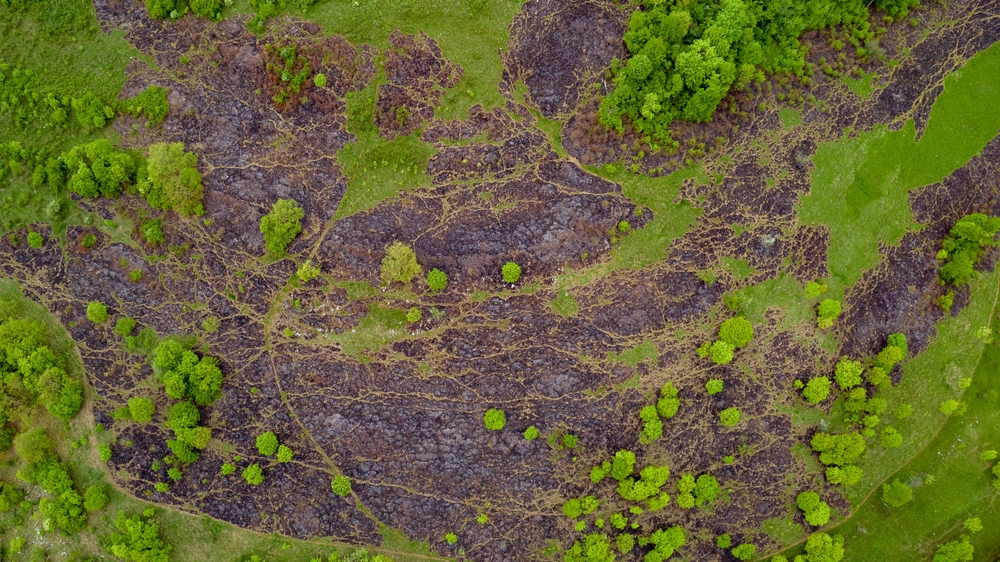
© Victor Grecu/Shutterstock
The village of Carașova is about 15 km from Reșița, a town in a region of Romania that is undergoing rapid development. Situated on the DN58 road towards Anina, Carașova is home to a major Croatian community: the large majority of its inhabitants are Croats.
The road to Carașova is all the more spectacular as the commune also marks the entrance to the Semenic-Caraș Gorge National Park, which boasts the largest virgin beech forest in the EU.
Carașova consists of the village of the same name, and the villages of Iabalcea and Nermed. According to the 2021 census, the municipality had just over 2,500 inhabitants – down from more than 3,100 in 2011.
Most residents are elderly. They are among the few who have remained in these three villages after their children left to find homes abroad.
With no people left to work the fields, no animals to make hay for, and an ageing population still guided by tradition – and economically dependent on farm subsidies – bushfires occur every year in Carașova.
To make matters worse, there are hardly any penalties.
“They come at night and put a match to it”
On 18 July 2023, a major vegetation fire in Bragadiru (Ilfov county) made headlines on all the news websites. The same day, a shepherd from Carașova explained to us how to clear the pastures in his village: with a match.
We find him in the shade of some plum trees. The dogs with which he guards his sheep have been following us, and we are urged along by their barking. As we approach, we see that he is moving with a stick. He lost his right leg when working in Italy picking tangerines.
In March 2019, part of the surrounding pasture burned. The flames were up to four meters high.

În-2023-am-stat-de-vorbă-cu-ciobanul-aici-dar-în-2019-ardea-cu-totul
PressOne has obtained a photo-video archive showing the vegetation fires in Carașova and Semenic-Caraș Gorge National Park since 2013.
Traces of that fire are still visible four years later.
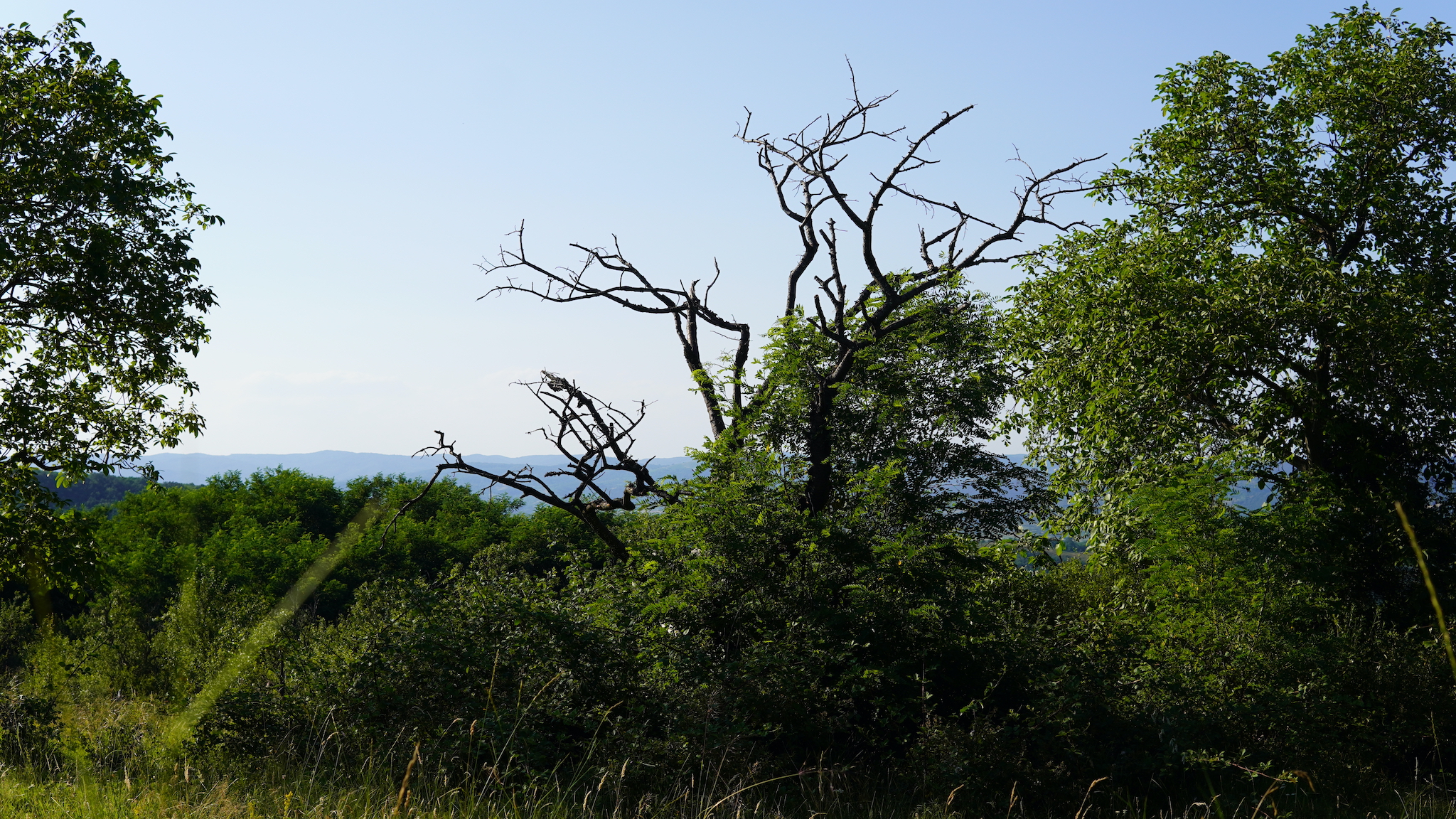
Urmele-incendiului-din-martie-2019-din-Carașova-se-mai-văd-și-acum-în-iulie-2023
The traces of the March 2019 fire in Carașova can still be seen in July 2023. Photo by Laura Popa
Traces of that fire are still visible four years later.
“The young people don’t like working. But the old people can’t do it any more, so to put a penny in their pocket for the subsidy, they come at night and put a match to it and set fire to it. The grass burns when it’s dry”, says the shepherd.
Local people no longer tend their land as they used to. They neglect the harvests in spring and autumn because there’s no one to do it. But many have signed up with APIA, the Romanian agency that provides farm subsidies. The condition is that they keep their pastures maintained. Fire allows them to solve this problem much faster and cheaper – even though APIA forbids it.
The shepherd from Carașova points to a plum orchard in the distance where ferns have taken over.
“When the plum trees dry out, if the owner doesn’t come to cut two or three furrows, and the trees end up on fire, they’re all finished. And the fern spreads even more when you burn it. But the Romanian doesn’t know that. It’s better to just rip it up”, explains the shepherd.
A theologian mayor and a Sunday sermon
A few metres from the Carașova town hall is the local Roman Catholic church. The village mayor, a theology graduate, describes it as a “place of the heart”. Bogdan Petru (PSD) has led Carașova since 2001, with a break between 2012-2016, when he lost the elections. He admits he faces “problems related to vegetation burning”.
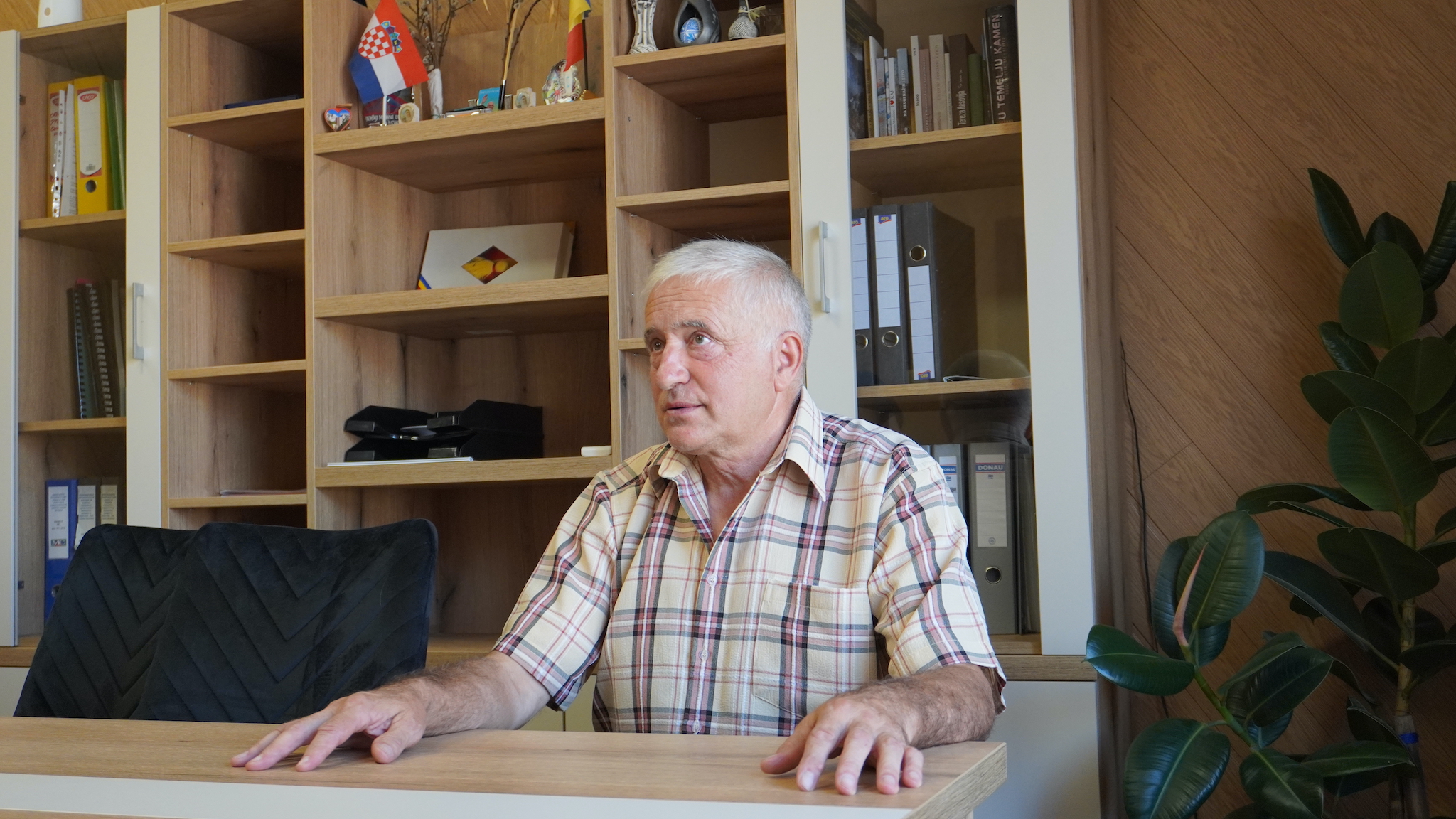
Primar-comuna-Carașova-Bogdan-Petru
Bogdan Petru (PSD), mayor of Carașova. Photo: Laura Popa
“There is a human factor at work here”, says the mayor. “In Carașova people have always assumed that in spring they burn the pastures so that they can graze the sheep afterwards. The fires were not strong, because we had about 30,000 sheep at that time and every piece of pasture was very well grazed.”
He says residents fear that because the local pastures are no longer grazed as they used to be, the land may be overtaken by trees.
“Lately we’ve been trying to draw a line under this. And I would like to tell you that we have had some success. But there are still people who are not in touch with civilization, with these changes,” he says.
“After Sunday’s service, I go out in front of the town hall and I tell them the news,” says the mayor. “And in these public meetings, at least 10 times a year, I bring up this issue of burning vegetation. I also tell them the legal reason, I tell them that the laws are very harsh, I tell them the other reason, the human reason, that it is not good to set fires, that forests will grow there, that this vegetation will be beneficial. We set fires year after year, but we will never be able to graze the whole area.”
In ten years we will be rid of fires
The mayor guarantees that in ten years no one will set fire to the pastures of Carașova. And not because the locals will understand the seriousness of the act or will fear sanctions. But simply because there will be no more people raising animals and thus wanting to set fires.
The alternative to fire would be agriculture with reaping twice a year: oats in spring, and hay in summer. But there aren’t many people left to do that. On the the municipality’s website we find an almost fairytale-like description of life in Carașova: “Since time immemorial”, it says, “the main occupation of the Carașova people has been fruit-growing and animal husbandry, on the poor, predominantly karst soil, with great toil involved in growing corn and wheat.”
In reality, says Mayor Bogdan Petru, the main source of income for the people of Carașova is working abroad. People have emigrated and taken their children with them. They only come back on holidays to visit. “Just think: before, we had two school classes for each age, and now the ages are combined. If we used to have two 5th grades, now we put 5th and 6th in one class,” says the mayor. Of those residents who haven’t left, most work in construction, the mayor adds.
As there are no new generations living off livestock, the problem of burning vegetation seems to lie with a few locals who have learned how to do it – and who are not penalised for it. APIA, which could withdraw subsidies from individuals who burn pastures, does not take much interest, says the mayor.
“We provide GPS data of all fires. We have had discussions, of course unofficial and friendly, with the APIA bosses. And they have said that, from their point of view, if the land is clear, it’s fine,” the mayor says.
And clear it is. The fires tend to be set in spring, when APIA applications are submitted. Two weeks later, the area is green and beautiful.
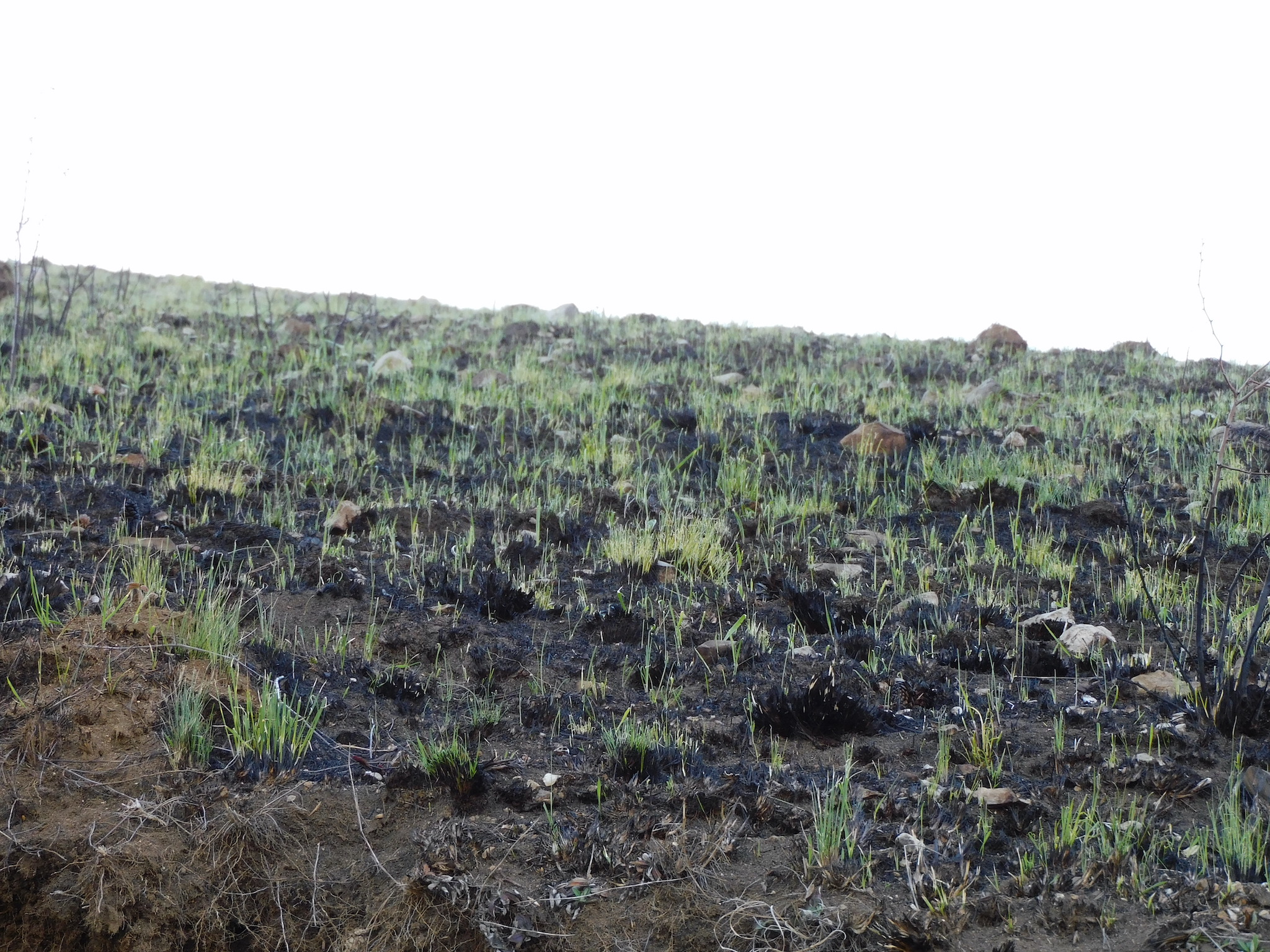
aprilie-2022-pășune-incendiată-după-cum-spun-localilncii-pentru-a-o-curăța.-Se-vede-deja-cum-iarba-verde-începe-să-crească-și-să-dea-impresia-de-teren-curat
April 2022. Grassland set on fire, locals say, to be cleared.
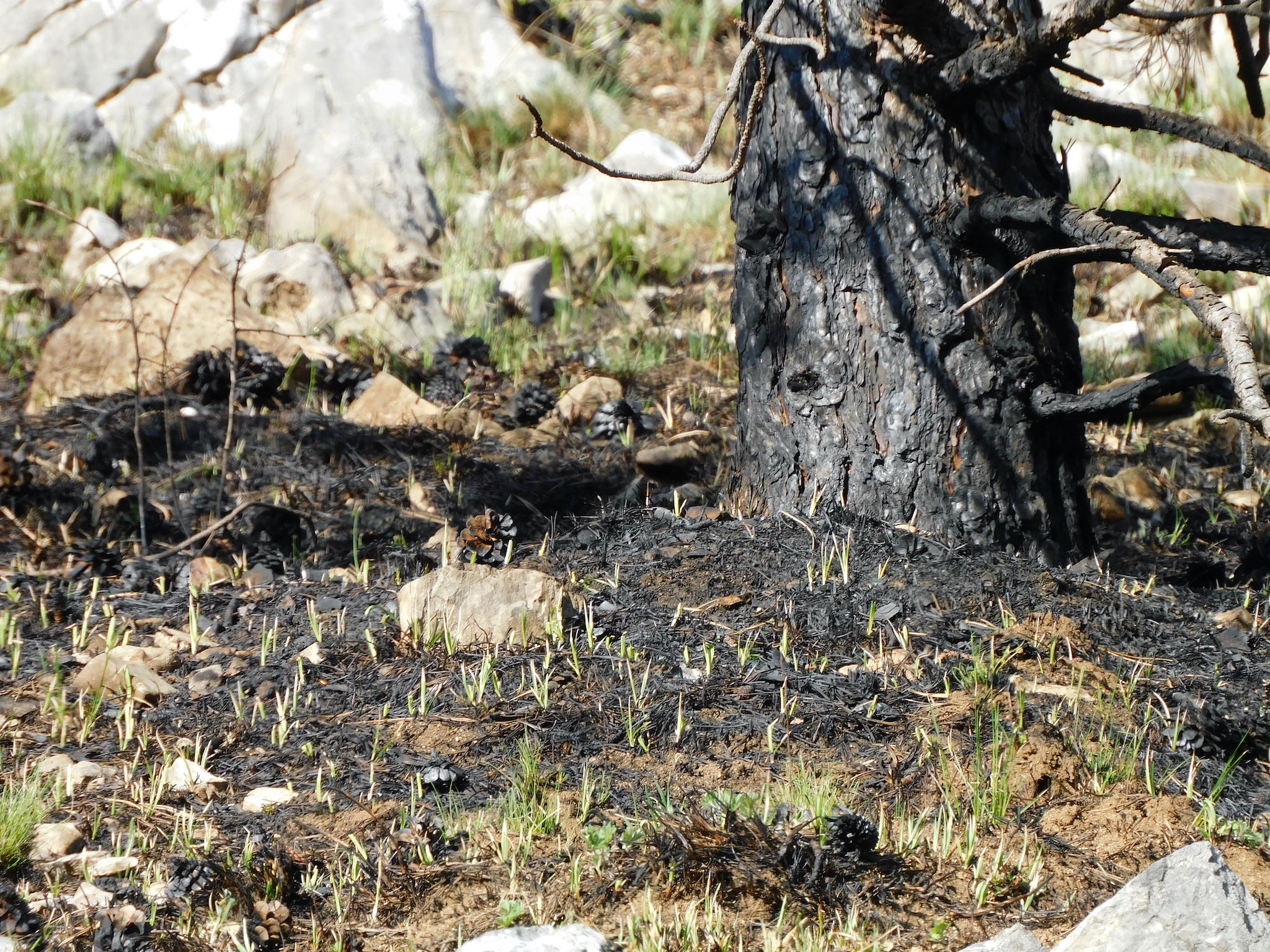
aprilie-2022.2-mai-departe-însă-se-văd-foarte-clar-consecințele-focului-asupra-arborilor.
However, consequences of the fire can be clearly seen on the trees, meaning that the area has been burned, which is forbidden by APIA funding rules.
The APIA told PressOne that, for 2020, 6 farmers were sanctioned at the level of the entire Caras-Severin county for violating the rule not to set fire to farmland and meadows.
Prevention with a soft touch
But the town hall isn’t getting any tougher either. Nor is the local police. In the first place, claims the mayor, this is because he cannot easily catch those who set the fires. We show the mayor the map of 2019 fires recorded in the European Forest Fire Information System.
“Yes, this area is very exposed because it’s right next to the national road. We have a hunch about the person involved. A man who was guarding sheep in this area. He just believed it was done that way. You light it and then fresh grass grows there. I tried to convince him that dry grass is better than no grass at all,” says the mayor.
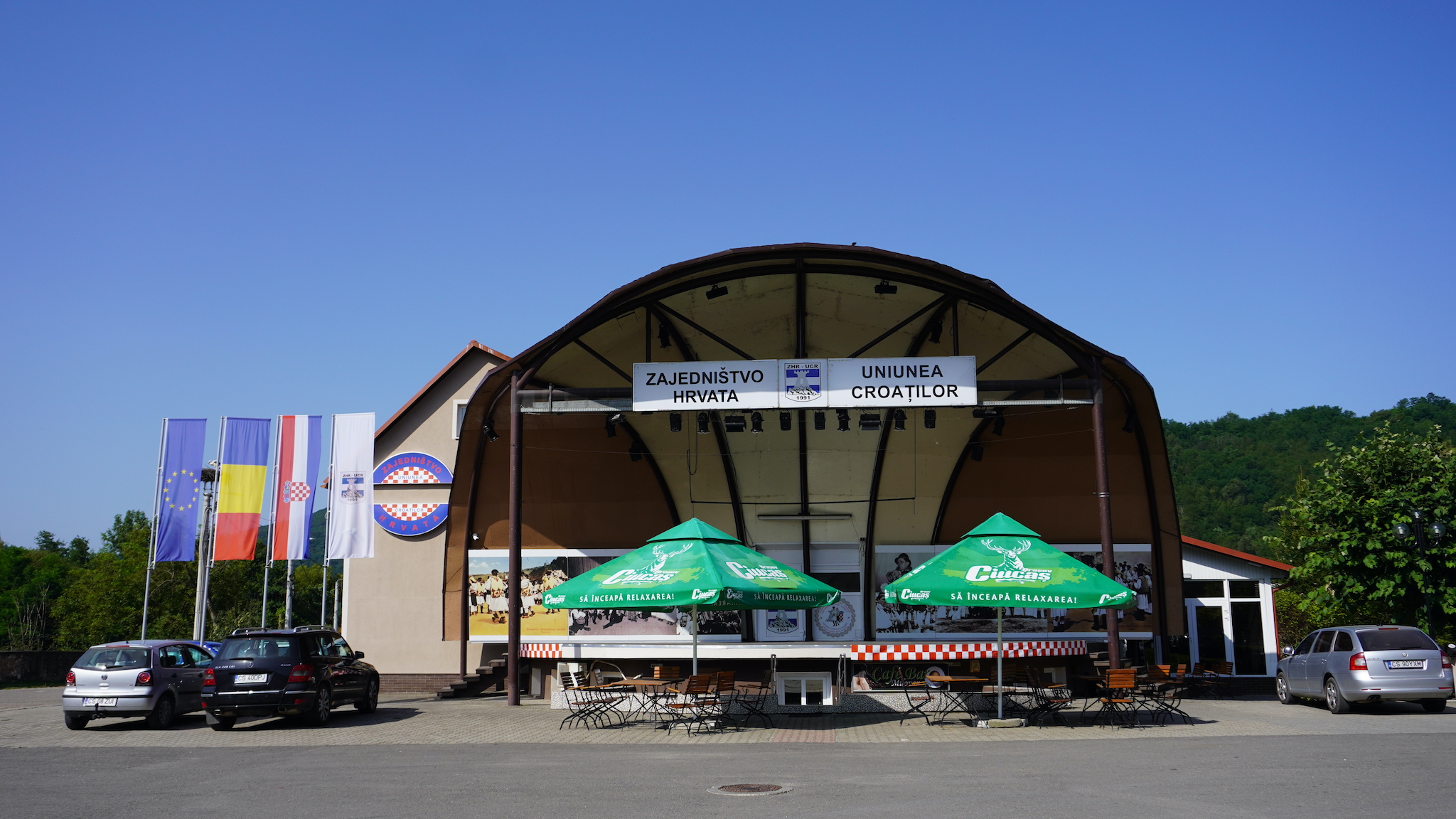
Scena-din-Carașova
Carașova. Photo: Laura Popa
The shepherd, however, was never fined because he was never formally identified.
Nobody fines those who light hay in their yards either, the mayor says. He does send the head of the Voluntary Emergency Service to warn them, but there are no penalties. He is “a believer in correcting things over time, with gentleness, with a human attitude”.
There are fires every spring, and even the mayor has admitted that the area along the main road is prone to them. But still, there is no question of police patrols.
“Look at it this way: how can they patrol 24 hours a day?”, he asks. “And you think that guy is going to set the fire when he sees the police car? The police car is visible, the man can easily hide in bushes and get away.”
Another empty village, another fire
We leave Carașova and go to Iabalcea, another village in the municipality. The entrance to the village is on a road that can barely fit a car. If someone comes from the opposite direction, the vehicles need to stop. Ifca Nicolae, the director of the Semenic-Caraș Gorge National Park, is also from Iabalcea.
The day is hot, over 35 degrees, and you can feel it in the village. Few locals are on the road. Every now and then, in the stillness of the summer day, you hear invisible voices in yards behind high gates.
On a strategically shaded bench we meet two women and a man, three different generations. They seem to be just waiting for another day to pass.
Across the road, a marker tells us that a section of the Via Transilvanica passes through there. As soon as you leave the centre of the village, the houses disappear and all that’s left are fields of grass. It is midsummer, so most of the grass has already been mowed and left to dry. But it does not take long to find a freshly burnt area.
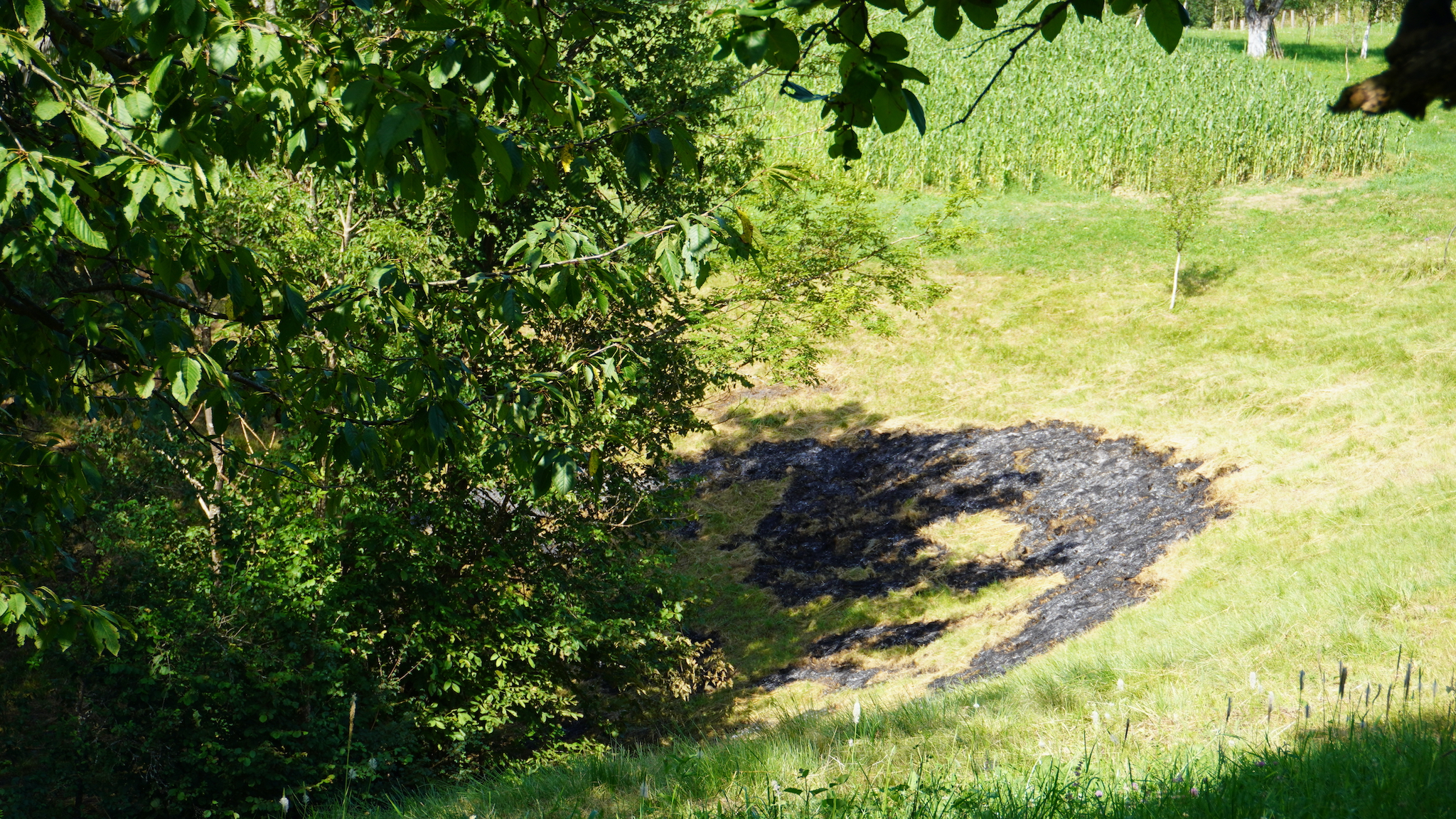
Zona-unde-a-fost-arsă-vegetație-de-curând-Iabalcea-iulie-2023
Area where vegetation was recently burnt, Iabalcea, July 2023. Photo: Laura Popa
“Maybe someone lit it. Look how it’s cut,” remarks Mrs Maria, who is walking home with her dog.
She explains: “Sometimes people come and take the hay away. These people [he points to the field next to us] mowed it and said a shepherd was coming. But he didn’t come to take it away. So what should the man do with it? He’s not allowed to light it, but we still do it at our own risk.”
In Iabalcea, only a few locals still keep animals, particularly the vet and a “shepherd”. There are a few who still have a cow, but that’s about it. And so a lot of hay is left unused. To get rid of it, local people burn it. If it were just left on the ground, it would not rot, and the next year would make mowing difficult because the machine’s rake would “choke”.
Mrs Maria had to wait for her daughter to come from Austria to help her mow and collect the hay, because her father was ill and she couldn’t manage alone. She still has an uncleared pasture plot. The shepherd promised to buy the hay from her and collect it himself, but this has not yet happened.
In spring, she says, there are people setting fires to clear their plots. And sometimes fire comes all the way from Carașova.
“A few years ago the village burned down. People had set a fire and left it. It sometimes comes from over the hill, where the Carașova people are. If in spring there’s a big drought and the hay is not ripe, the fire will spread. There are still people who have this instinct in their blood to light a fire”, says this local woman from Iabalcea.
Five minutes away, we come across Pătru and his dog, a friendly five-month-old shepherd. Pătru will soon be 86. He’s got his scythe behind him. He wants to spread the hay that hasn’t been gathered into bales. In the spring, he sets fire to it, “so it doesn’t get out of control”.
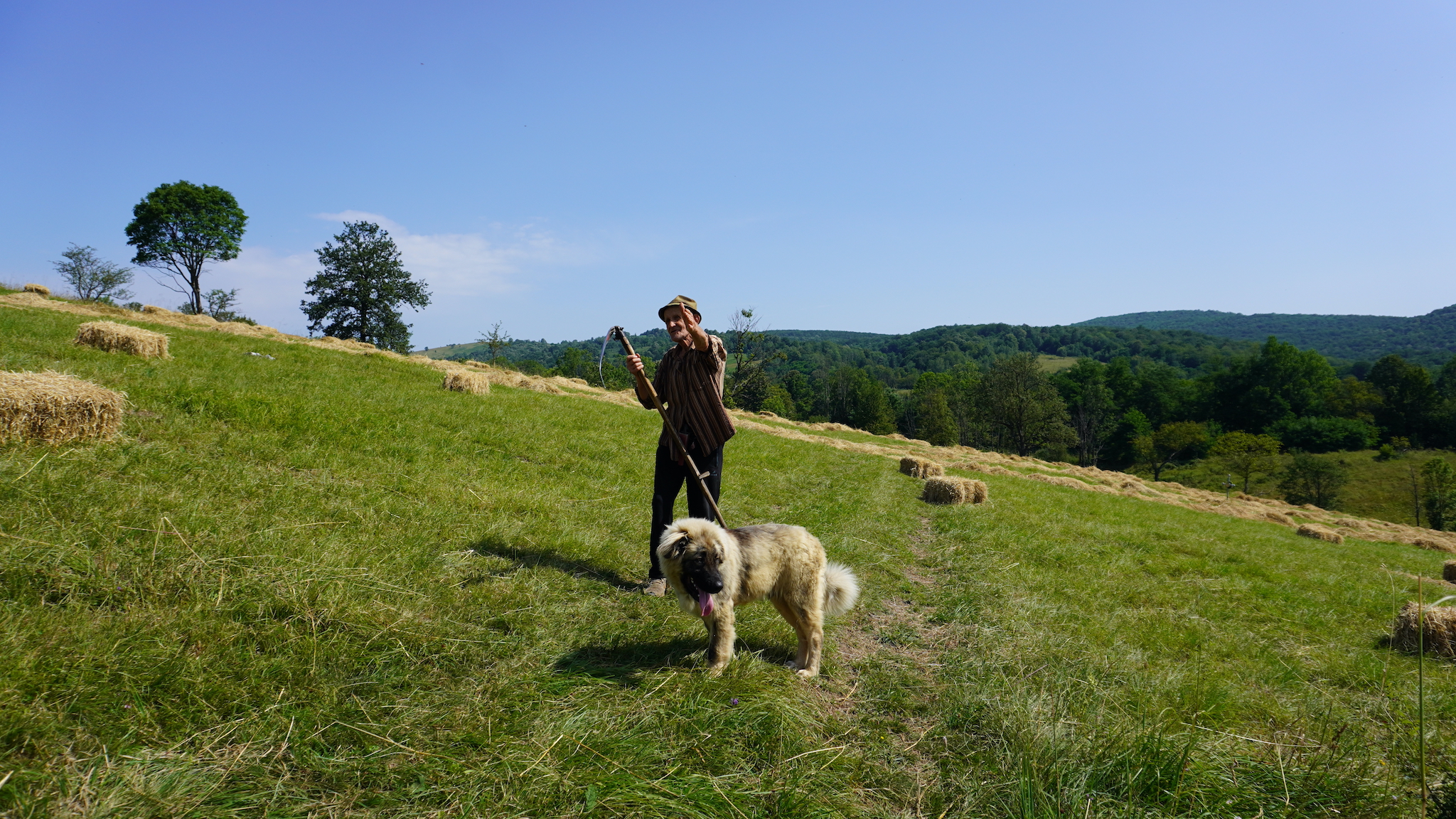
Pătru-85-de-ani
Pătru, 86 years old, says that people used not to set fire to hay, and that you couldn't find a single straw unmown on the pasture. Now, because there are no more animals, people have nothing to do and end up setting fire to it. Photo: Laura Popa
We ask him about the burnt portion of pasture we saw further down the valley.
“It’s nothing. They light the hay people have cut, to clean up. Because there’s nothing left to do with it. So as to stop it becoming overgrown. If there were only forest here, beech trees, it would be a different matter”, explains Pătru. He shows us the way to Groapa Iepii, a tourist spot in Iabalcea where tourists would go with “cameras and take pictures”.
We leave Iabalcea for Nermed, the last village on the map of Carașova, with just over 500 inhabitants. A local explains: “There were big fines about three or four years ago. It’s because of the sun, the climate.”
No year without fire
Dorin Magargiu was the first ranger hired in the Semenic-Caraș Gorge National Park in 2004, when the park was established.
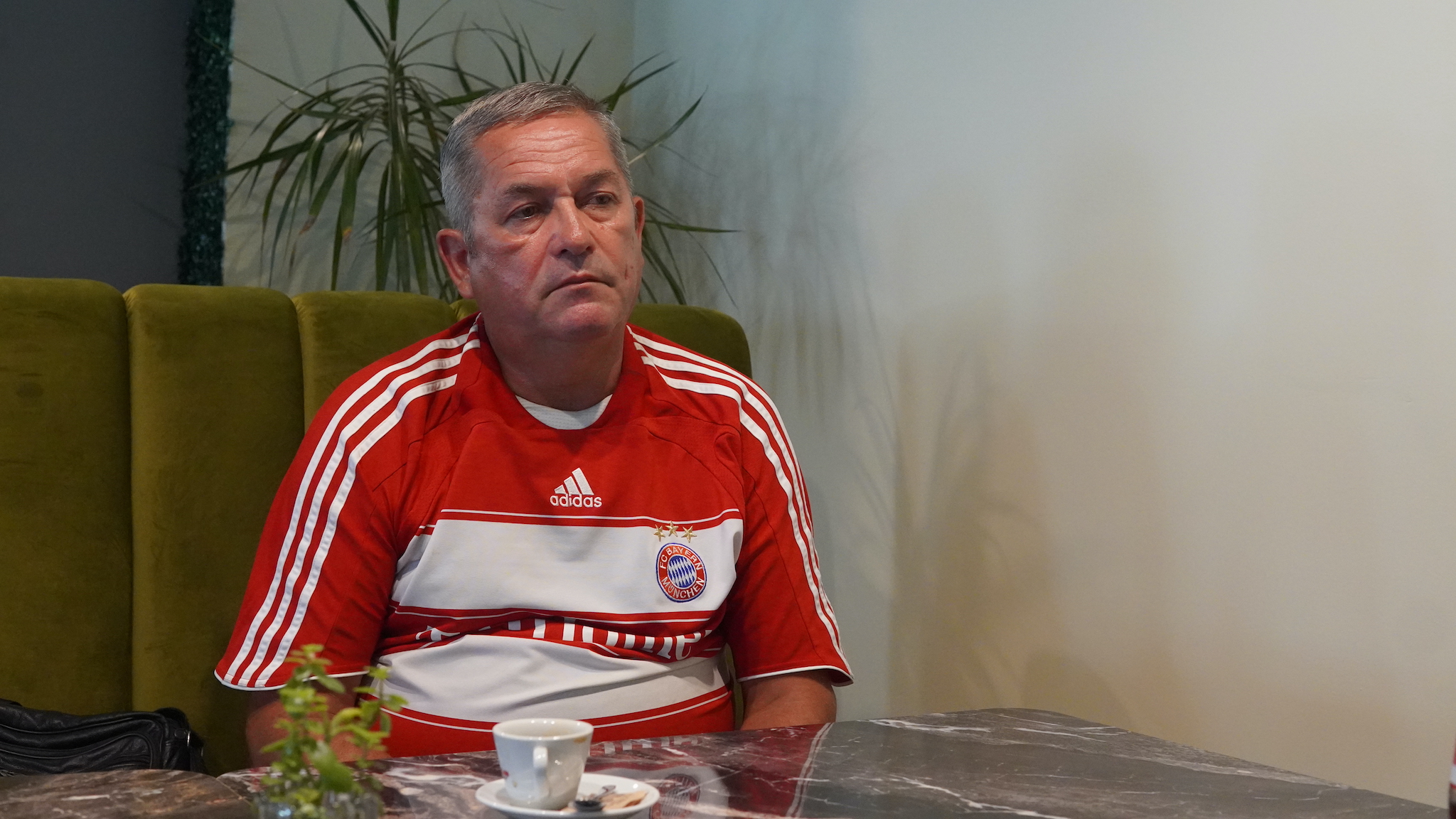
Dorin-Magargiu-primul-ranger-angajat-atunci-când-a-fost-înființat-Parcul-Național-Semenic
Dorin Magargiu, the first ranger hired when Semenic National Park was established. Photo: Laura Popa
For more than 16 years, he has been pacing the hills of Carasova, but in 2021 he resigned. In all that time, he says there has not been a year without a fire. In one case, seven fire engines were needed to put out the fire, which was in the protected area.
Local authorities see the national park as an enemy to the development of the village. “It represents a lot of restrictions for citizens and for the development of the community and it is not a positive factor”, says Mayor Bogdan Petru. He claims that investors are afraid to come to Carașova because of it.
“We’ve had a lot of investors come. One wanted to set up a lime factory in Anina and exploit the stone quarry. I wanted to develop the quarry too, on behalf of the municipality. It was not allowed. [..] We now have the potential for wind and photovoltaic installations. But again it’s a problem. We’re looking for land, but everyone avoids the park,” says the mayor.
The total area of the commune is about 14,000 hectares, but only a part of this is in the Semenic-Caraș Gorge National Park. What’s more, even within the park, only 30% of it is a strictly protected area, i.e. where no intervention is allowed.
Fires, official and unofficial
According to some unofficial sources, about 540 hectares of the park are ravaged each year by bushfires.
Officially, in a response sent by Romsilva [Romania’s forestry agency] to PressOne, no fires were reported in the park in 2018, 2019 or 2020.
Semenic-Caras Gorge National Park is managed by Romsilva on the basis of a contract with Romania’s environment ministry. The park’s administration is responsible for everything that happens there, from habitat protection, to fires, to rubbish and illegal logging.
According to the law, in the event of a fire in the park, the administration must notify Romania’s Environmental Guard and Romsilva within 24 hours. The Environmental Guard, as the coordinating body, should carry out an on-site inspection to ascertain what has happened and whether there has been mismanagement. To do this, however, it requires an assessment of the damage to the habitat. This can only be provided by the park management itself – which might be found guilty of mismanagement if it were to report too much damage.
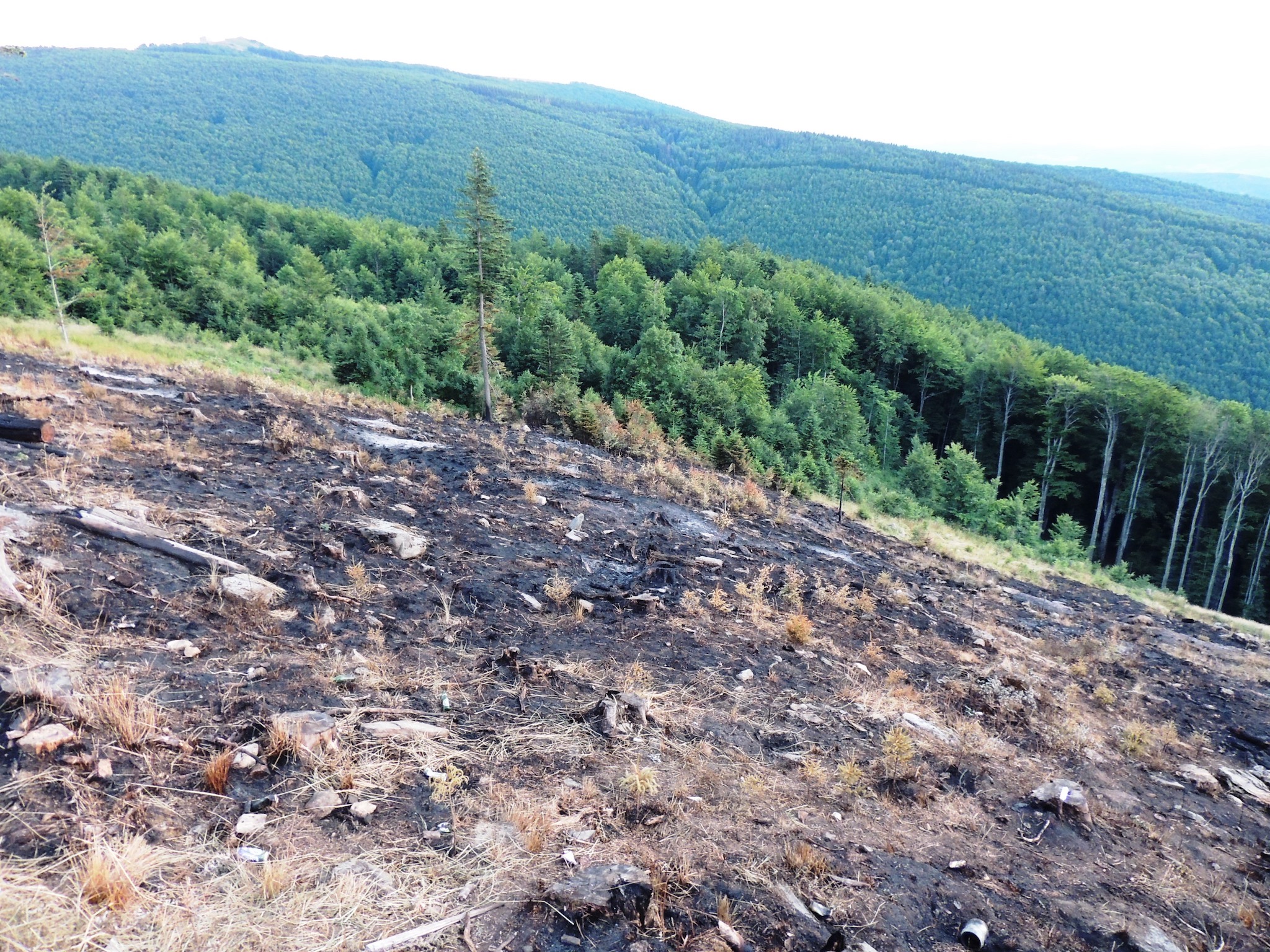
august-2017-incendiu-Munții-Semenic-unde-am-fost-și-noi-în-vizită
August 2017. Fire in the Semenic Mountains
PressOne sources say, moreover, that there is no methodology approved by any competent authority when it comes to this assessment. Everything is done by ear, by estimates.
During his years as a park ranger, Dorin says he would draw up reports for every fire he saw in the area for which he was responsible. The park administration would be notified and sanctions imposed.
“Nothing happens. When it [a fire] takes place, it’s reported. But after a while the grass regrows. And then the APIA comes and checks, and finds green grass”, explains the former ranger. “But even then you can see that a fire burned four metres high. You can see from how burnt the trees are. There’s no hiding that.”
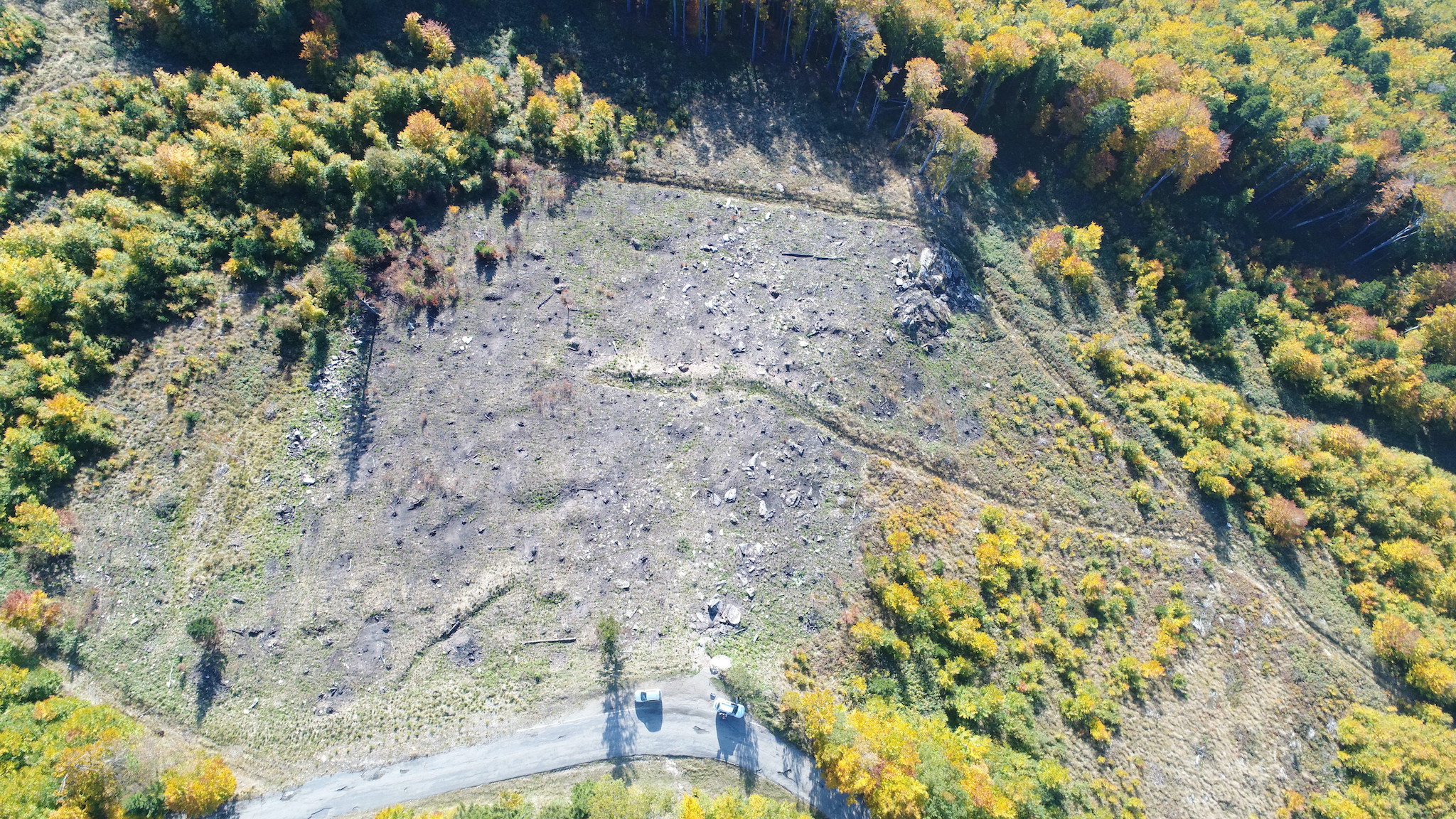
DCIM100MEDIADJI_0021.JPG
Fire in Semenic, drone photo, October 2017, three months after the fire.
In an official request we asked Romsilva if, for the period 2020-2023, the park administration had been sanctioned for mismanagement in relation to fires. The agency replied that “this was not the case”.
The way Romsilva manages Semenic-Caras Gorge National Park is also reflected in the story of a single spruce along the 582E road. Not only were all the trees in that area cut down, but a fire broke out in 2017. As witness to it all, the spruce is still standing in 2023, but completely dry and surrounded by the burned stumps of other trees.
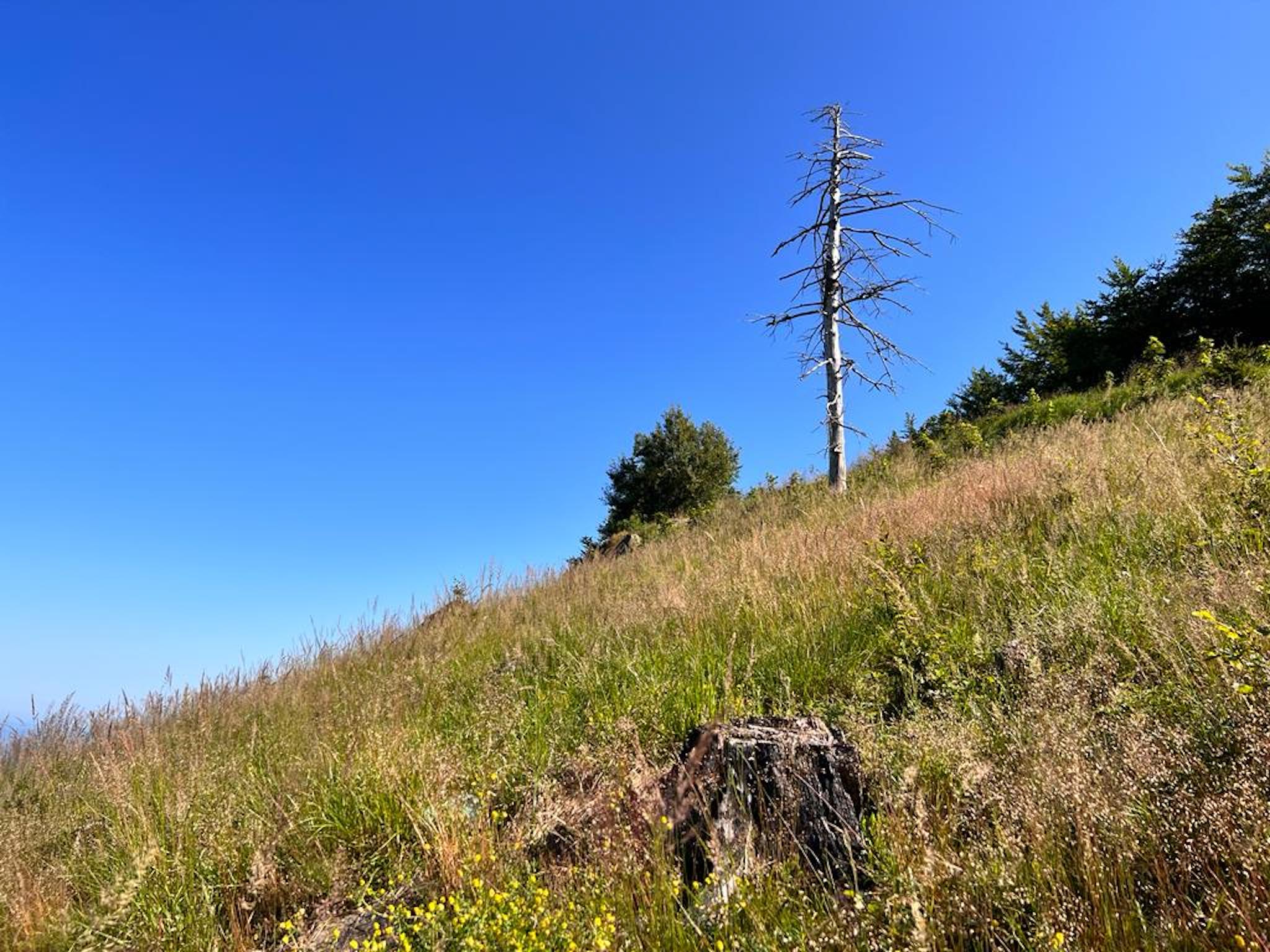
Molidul-alb-care-a-scăpat-de-incendiu-din-2017-doar-pentru-a-se-usca-pe-picior-iulie-2023
White spruce that escaped the fire in 2017, only to dry on its own, July 2023.
What’s next?
Wildfires are currently raging in Greece. Romania has sent 130 firefighters and dozens of fire engines as part of the EU’s Civil Protection Mechanism, to help the Greeks cope. Romania’s climate is different from Greece’s, and this would seem to protect us from massive wildfires here. But it is evident that Romania is sharing more experiences with countries such as Greece, Spain and Portugal. In a previous article we explained the reasons for this and what can be expected in the future.
In order to better cope with fires, Romania underwent an expert analysis by the EU’s European Civil Protection Mechanism in 2022. Four independent experts from Croatia, France, Portugal and Spain, selected by the European Commission, identified areas of weakness when it comes to emergency management.
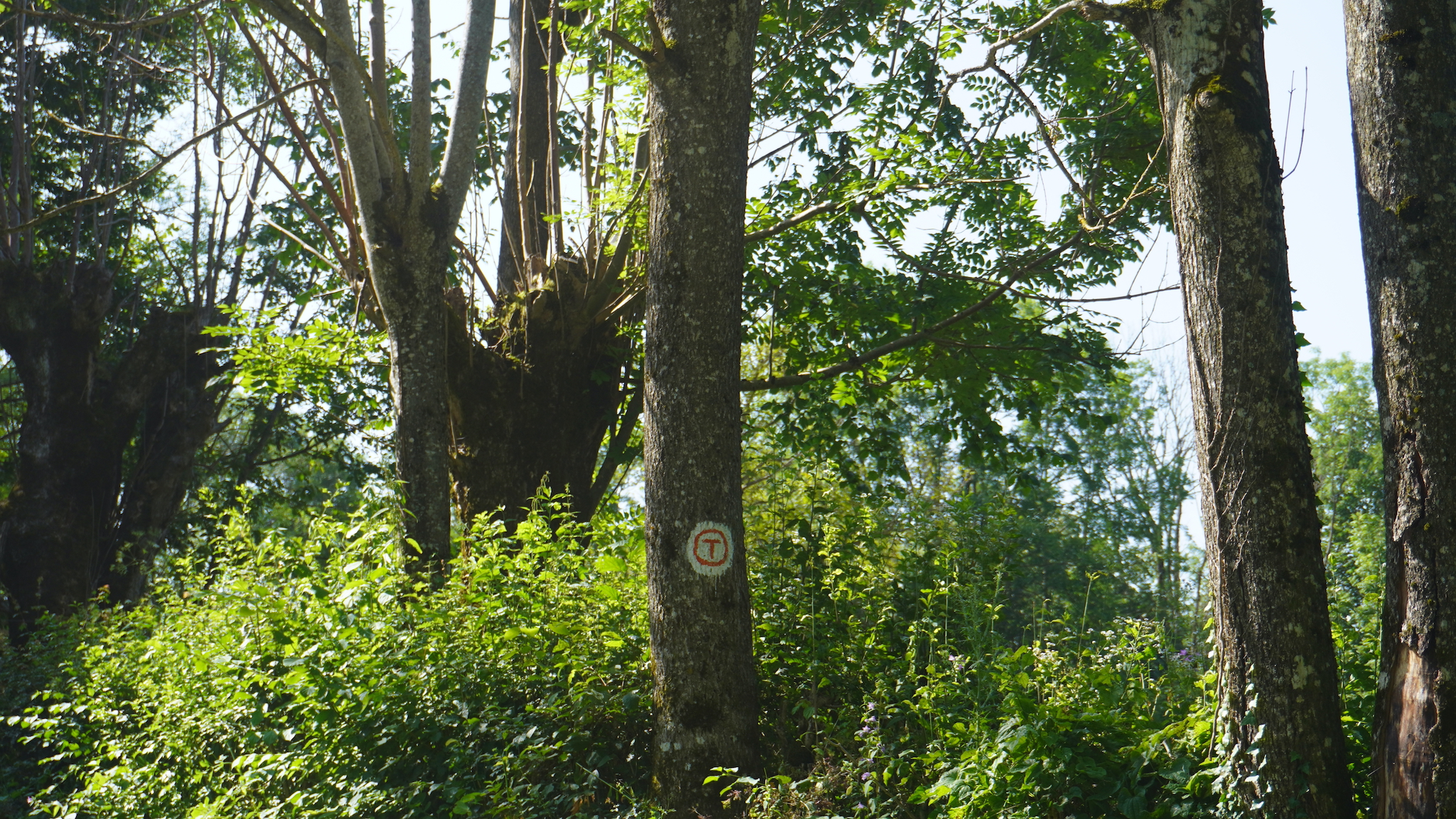
Prin-Carașova-trece-și-o-parte-din-Via-Transilvanica
Part of the Via Transilvanica passes through Carașova. Photo: Laura Popa
In their view, there needs to be a much broader awareness campaign to target farmers who burn vegetation. In addition, more attention should be paid to prevention, with funding allocated for this. To this end, in Romania work is currently underway on the National Strategy for Disaster Risk Reduction. The aim is to encourage public and private investment in risk-reduction projects.
According to the interior ministry, this draft strategy is in the process of inter-institutional consultation.
A potential solution: monitoring via a network of sensors
Since the mayor of Carașova rules out the idea of police patrols, Alexandru Luchiian has another solution: placing sensors in areas prone to fires.
Alexandru is a specialist in smart-technology systems. Following several other environmental projects, he has managed to set up a network for identifying and monitoring fires using sensors: SpotFire.
“We have seen that sensors that measure air quality, namely PM10 and PM2.5 concentrations, can also detect smoke”, says Alexandru Luchiian. “So when there are measurements of 55 ug/m3 to ug/m3 then clearly there is smoke in that area. And there is no fire without smoke.”
“I have seen this from sensors placed around the country. Each time I saw very high values, I would call where I left the sensor and ask what was happening in the area. And they would say, ‘the neighbour on the right is having a barbecue’, or ‘the neighbour on the left is burning leaves'”, he says.
Based on his findings over air quality, Alexandru Luchiian designed another sensor, powered by a solar panel, that would also collect data on humidity, temperature and flames. He placed some models in an area near the motorway in Cluj-Napoca, but they were soon vandalised and stopped sending data.
“What we tried with SpotFire was to test a series of sensors that would sit in fields, in forests, in protected areas and be able to provide the intensity and severity of situations – so as to know in advance that ten fire engines are needed because the fire has spread quickly or is going in X direction […] You know the times when the humidity drops quickly and the temperature rises. You have, for example, a window when such fires can happen. From 1pm or 2pm to 4pm,” he explains.
How much would it all cost?
“For smoke detection, which is the easiest to measure, and detection of particles, humidity and temperature, we can provide sensors for around €300”, says Alexandru Luchiian.
“We are now looking for solutions to make the sensors as cheap and as small as possible, so they can be dispersed around a protected park, for example. But to do that I need someone behind the project. Not so much an NGO as the state.”
“The authorities know. This is not a novel solution. I don’t think I need to go to the town hall and present it to them. I’ve done this and I’ve learned my lesson,” explains the SpotFire founder.
For example, when it came to Cluj’s air quality sensors, he wanted to place them near national stations so he could compare data. He got an acceptance from Bucharest but a rejection from Cluj.
“The data is public, anyone can access it. The authorities even more so. So far no one has come to me. I know it was used by the Cluj city hall and posted on one of their portals. We emailed the municipality, but nobody answered”, laments Alexandru Luchiian.
In the USA, the authorities are already using such a national air-quality network and private sensors to monitor which direction smoke is moving and, if necessary, to alert the public.
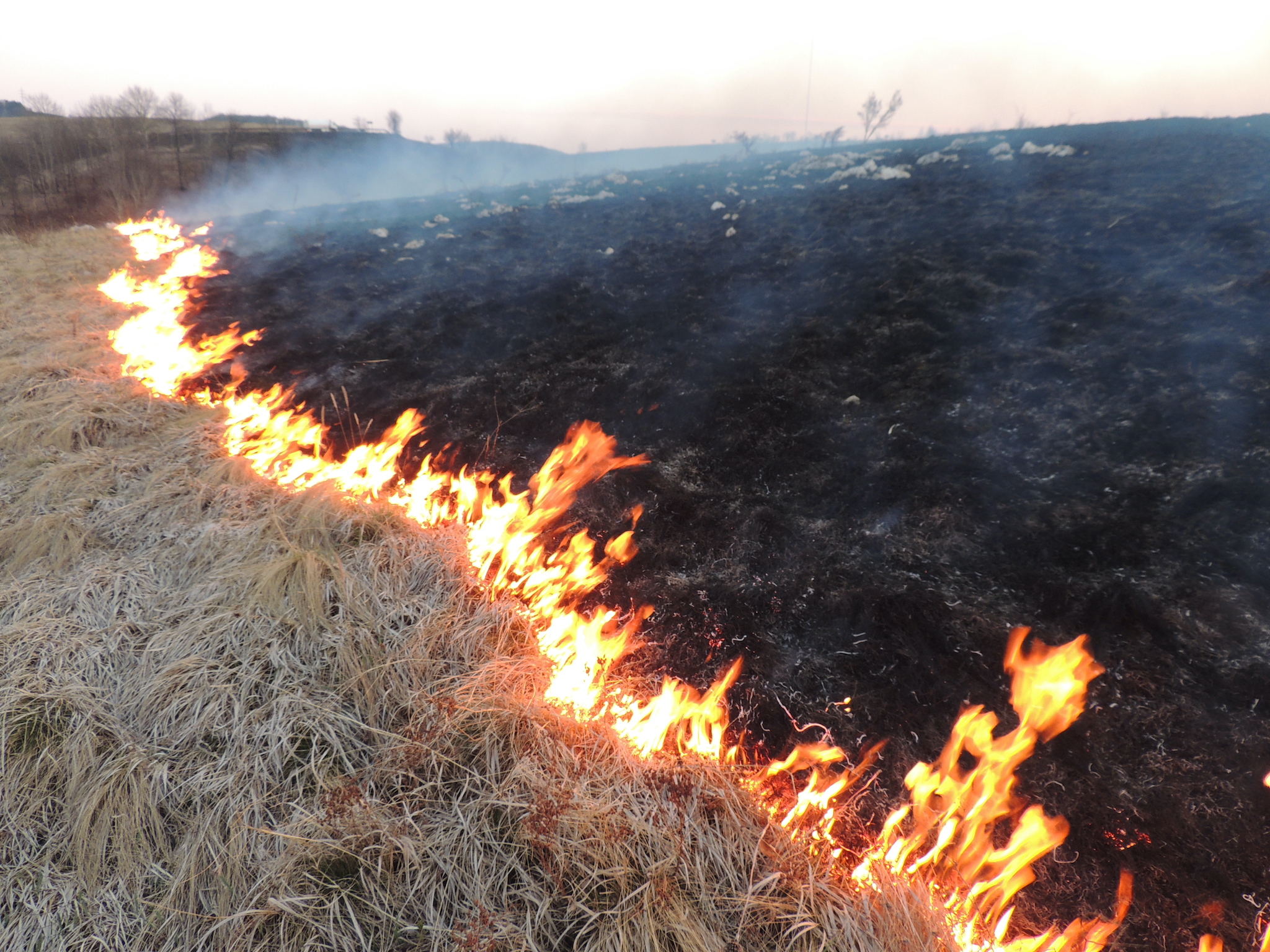
Focul-mănâncă-cu-rapiditate-vegetația-uscată-martie-2019-Carașova
Fire rapidly devours dry vegetation March 2019, Carașova.
Climate change is helping to create the conditions for wildfires to start and spread. And the more fires we have and the more intense they become, the more carbon dioxide will be released, which in turn will contribute to more global warming.
It’s a vicious circle. The depopulation of villages, the lack of jobs, and poor education only make it worse. Without people to clear the land, it’s easier and cheaper to light a match.
And when institutions function poorly, that only makes the problem harder to solve.
 This material is published in the context of the "FIRE-RES" project co-funded by the European Union (EU). The EU is in no way responsible for the information or views expressed within the framework of the project. Responsibility for the content lies solely with EDJNet. Go to the FIRE-RES page
This material is published in the context of the "FIRE-RES" project co-funded by the European Union (EU). The EU is in no way responsible for the information or views expressed within the framework of the project. Responsibility for the content lies solely with EDJNet. Go to the FIRE-RES page
